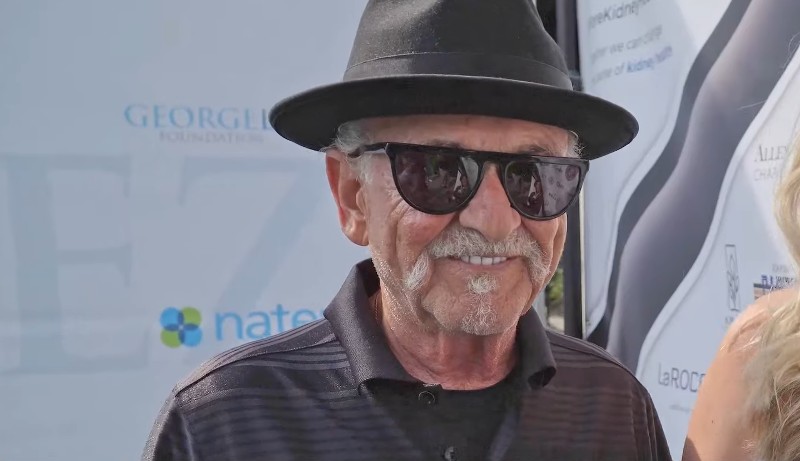Anyone who wears a hat regularly will eventually be told they make you go bald. It’s a popular pearl of wisdom that well-meaning friends hand out to stop you from losing that thick head of hair.
So is it true, or is it a myth? In truth, most people don’t need to worry. Hats don’t cause Male Pattern Baldness. I started to go bald in my early 20s, and it wasn’t because of what I wore on my head.
However, there are a couple of ways that hats can contribute to other types of hair loss. In this article, I’ll explain what those are, and how you can avoid them.
Quick takeaways:
- Hats & Baldness: Wearing a hat doesn’t cause Male Pattern Baldness.
- Exceptions: Tight-fitting and dirty hats can lead to hair loss through traction alopecia and scalp infections.
- Safety First: Ensure your hat fits properly, is clean, and is made of breathable material.
- Solution: Notice hair thinning due to hats? Stop wearing them tightly or opt for better-fitting ones to allow hair regrowth.
Read on for more details on how hats can make you bald, and what to do to avoid it.

Does wearing a hat make you bald?
Wearing a hat doesn’t cause Male Pattern Baldness, but this myth has been around for a long time. Typically, Male Pattern Baldness is caused by hormones. Wearing a hat has no impact on hair thickness. However, there are a couple of exceptions to be aware of.
- Myth: Wearing a hat makes you bald.
- Reality: Male Pattern Baldness is influenced by hormones.
- Exception 1: Tight hats can cause traction alopecia.
- Exception 2: Dirty hats can lead to hygiene-related hair loss.
First, you should know that Male Pattern Baldness is caused by dihydrotestosterone (DHT), a hormone that is created in men when the testes process testosterone.
All this happens inside the body. What happens on top of your head usually has no impact on your chances of developing Male Pattern Baldness. There’s no conclusive evidence linking hats to hair loss or baldness, whereas we do know there’s a link between smoking and baldness, amongst other factors.
The myth may actually have originated because men who start to notice their hair thinning or receding are more likely to start to wear hats to cover it. For example, while Joe Pesci’s hairline was visibly receding throughout his career, we don’t know whether he’s fully bald now as he always wears hats on his rare public appearances:

Bald people wearing hats could have created an observational bias as people make the link between headwear and hair loss, but this is just speculation. Nobody really knows where the misconception originated from.
However, MPB isn’t the only cause of hair loss. Here are the answers to the key questions about hats and baldness:
Does wearing a hat thin your hair?
The only way wearing a hat can thin your hair is if the hat is too tight. This can lead to a condition called traction alopecia, which, according to healthline.com, is ‘hair loss that’s caused by repeatedly pulling on your hair’ and can be triggered by wearing tight-fitting hats.
Just as an overly tight ponytail or bun can put excessive tension on the hair, a hat that is too tight can also lead to similar problems. This constant pressure and pulling can weaken the hair, causing it to break and fall out more easily.
Because hats are tighter in certain areas than others, the hair loss won’t be consistent across the scalp. This can cause the appearance of bald patches and uneven hairlines.
If someone simply stops wearing the tight hat that led to the hair loss, or wears better-fitting headgear, it’s possible to reverse the effects of traction alopecia. Provided the root cause of the hair loss stops early enough, hair can naturally regrow over time.
If not, and the strain on the hair continues over long periods, the resultant hair loss can become permanent.
Is wearing a hat every day bad for your hair?
There are lots of reasons not to wear a hat every day. Overuse of headwear can cause hair loss and other scalp conditions, so if you do want to wear a hat daily at least make sure it fits properly, and you keep it clean.
Here are a couple of things to consider:
Cleanliness
Wearing a dirty hat can lead to scalp infections like folliculitis, which affects hair health and can even cause hair loss.
Just like any other item of clothing, what you wear on your head needs to be kept clean, so wash your hats regularly, especially if you’re going to wear one every day.
Breathability
The material of the hat is important too, especially if you’re wearing it every day. Hats made from natural, breathable fabrics like cotton or wool allow better air circulation to your scalp and hair compared to synthetic materials.
Overheating your scalp can potentially lead to conditions like seborrheic dermatitis. This nasty skin disease is very itchy and uncomfortable, leading to itching that can cause hair loss. It also comes with a nasty inflammation that can disrupt the normal hair growth cycle, leading to further shedding.
However, hair loss associated with seborrheic dermatitis is usually temporary. The majority of the time, it’s caused by the itching, not the condition itself. Once the inflammation is treated and resolved, hair typically grows back.
Is wearing a beanie bad for your hair?
Wearing a beanie isn’t bad for your hair in itself, but its effects depend on a couple of factors. It’s unlikely that a beanie would be too tight and cause traction alopecia, but like any hat, a dirty beanie could lead to scalp infections, disrupting hair health.
Beanies are often made from thick materials which might not let your scalp breathe. This can overheat your scalp and create a moist environment in which certain scalp conditions thrive.
Does wearing a cap make you bald?
Wearing a cap doesn’t cause Male Pattern Baldness, but it can still contribute to hair loss. If you wear a cap too tightly it can cause traction alopecia, and if you never wash your cap, it might develop bacteria that leads to a harmful scalp infection.

Wearing a cap too tightly can also decrease blood flow to the hair follicles which impacts their ability to produce new hair.
These scenarios cause hair loss that is temporary, but treatable. Baseball caps are much more likely to cause traction alopecia than beanies due to being more rigid. However, where the hair is gradually damaged or pulled out by pressure from the cap, this doesn’t damage the follicles.
Stop wearing the cap (or find one that fits better) and the hair will grow back. However, it’s better to catch it early, as over a long period of time this hair loss can become permanent.
Likewise, scalp conditions like folliculitis and seborrheic dermatitis (see above) are a risk but treatable. Wearing a cap every day creates that warm, humid environment that bacteria thrive in, but any hair lost will grow back as long as it’s treated early.
Does wearing a hard hat cause baldness?
Wearing a hard hat doesn’t directly cause baldness, but a tight-fitting hard hat can cause traction alopecia, a form of hair loss due to excessive tension. Also, a hard hat that isn’t cleaned regularly can mean that bacteria develop, leading to scalp infections that indirectly cause hair loss.
Hard hats typically aren’t too breathable, which means your head will sweat more. This can make existing scalp issues worse, and constant itching can then damage hair and cause temporary hair loss.
Scandinavian Biolabs offer the following advice for hard hat wearers:
- Ensure your hard hat fits properly, without being too tight.
- Avoid wearing metal clips or barrettes that may cause pressure or friction on your scalp.
- Give your scalp some breathability to prevent excessive sweat.
- Avoid hats that apply excessive pressure on the scalp.
- Choose hats that are comfortable and have a snug fit.
Can wearing a durag make you bald?
Wearing a durag isn’t directly linked to baldness, but like any hat they can cause hair loss is worn too tightly, due to traction alopecia. Because durags need to be tied tightly to stay in place, it’s easy to damage hair and hair follicles by wearing them excessively.
Also, a dirty durag could cultivate bacteria and potentially result in scalp infections, indirectly affecting hair health. Durags might not allow the scalp to breathe enough, especially if made of synthetic materials. This can lead to excessive sweating or trapped moisture, making existing scalp conditions worse.
Just like beanies, baseball caps, and hard hats, this causes your scalp to become irritated and the resulting scratching can damage the hair and lead to temporary hair loss.
The advice is the same for durag wearers as for people wearing any other type of headwear. Make sure your durag fits properly, clean it regularly, and take breaks from wearing it so your scalp can breathe.
FAQs
You can definitely wear hats if you’re already experiencing hair loss, as it won’t accelerate male pattern baldness. It can also be a good way to disguise thinning or receding hair if you’re not sure what to do about it just yet.
If your hair loss is due to traction alopecia from wearing a hat too tightly, and you address it early on, your hair may regrow naturally if you stop wearing hats. However, if the hair loss is due to genetic factors like male pattern baldness, stopping wearing a hat won’t reverse the condition.
Hats made from natural, breathable fabrics like cotton or wool are better for your hair and scalp, as they allow better air circulation. This helps reduce excessive sweating and overheating of your scalp.
If you suffer from seborrheic dermatitis or any other scalp condition, it’s always best to consult a dermatologist. In general, ensuring your scalp gets adequate air and remains clean is crucial. If you choose to wear a hat, make sure it’s breathable and clean.
Summary
Men can wear hats without worrying about hair loss.
There are just a few simple rules to follow:
- Don’t fasten any headwear too tightly
- Don’t wear hats too often
- Wash your hats to avoid scalp hygiene issues
- Take regular breaks from wearing work-related headgear like hard hats
If you’ve fallen into these traps in the past and notice your hair thinning in some areas, you should be able to correct it by following the guidelines above. This type of hair loss should be temporary and your hair should grow back just fine.
If it’s a long-term issue and you’re worried your hair might not grow back, you have plenty of options. I’ve outlined those options in my free guide below, which helps you decide whether you should shave your head, or go down another route:

